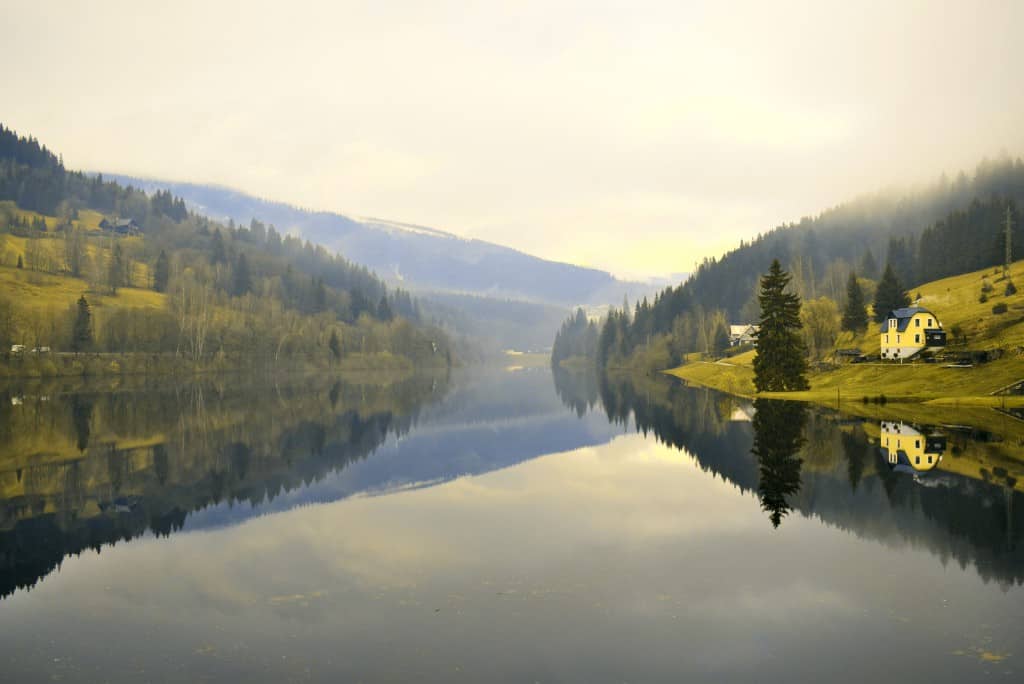There’s a place in Eastern Europe to suit every camper and outdoor enthusiast.
From the Carpathian Mountains in Romania to the beaches of Bulgaria, caves in Hungary and more, this region belongs on every camper’s bucket list.

Romania
Danube Delta: This UNESCO World Heritage Site is home to a unique ecosystem of marshes, forests, and lakes. There are many different camping options available, from rustic campsites to luxurious eco-lodges.
Scărișoara Gorge: This stunning gorge is in the Apuseni Mountains, where several campsites are located. This area is famous for its glacier and attracts rock climbers and cavers as well as campers.
Transfăgărășan: This scenic mountain road in Romania’s highest peaks is known for its hairpin turns and stunning views. There are several campsites located along the highway, which offer great facilities and adventure opportunities for hiking, biking, and fishing.
Top tips! The best time to visit the Danube Delta is during the spring or fall, when the weather is mild. Also, be sure to bring insect repellent, as mosquitoes can be a problem.

Bulgaria
Black Sea Coast: This popular beach destination offers a wide range of camping options, from simple tents to facilities for fully-equipped mobile homes. There are plenty of beautiful beaches perfect for swimming, sunbathing, and water sports.
Rila Mountains: This mountain range is home to stunning lakes, including the Seven Rila Lakes. There are several campsites located in the mountains, as well as plenty of trails for hiking and mountain biking.
The Strandzha Mountains: Camping in this wonderland in southeastern Bulgaria offers a more remote camping experience and is home to a variety of wildlife, including bears, wolves, and foxes.
Top Tip! Though not official, wild camping by respectful tourists is tolerated in Bulgaria by authorities and locals.

Poland
Masuria: This region of lakes and forests is a popular camping destination for Polish families and tourists alike, with a wide variety of campsites available. The area is famous for its lakes – there are over 2600 here – so bring your rod, as plenty of fishing spots await.
Kampinos National Park: This incredible park is close to Warsaw and home to a variety of forests, meadows, wetlands and wildlife . There are several campsites located within the park that attracts hikers, cyclists and horse trekkers.
Pieniny Mountains: This mountain range is in the south of Poland bordering Slovakia and is known for its beautiful scenery and hiking trails. There are several campsites located in the mountains, popular with hikers and climbers.
Top Tip! Poland’s wildlife includes bears, wolves, and boars. If you are camping in a remote area, be sure to take precautions to stay safe, such as making noise to let animals know you are there and storing food in a bear-proof container.

Georgia
Borjomi-Kharagauli National Park: Stunning scenery in a region of mountains, forests and waterfalls awaits campers in any of the several parks to choose from. Horseback riding is popular here, so be prepared to saddle up and get a local guide to show you the sights.
Svaneti: This mountainous region is known for its traditional villages and stunning scenery. There are several campsites located in Svaneti, recognised by UNESCO as an area of outstanding universal value.
Kazbegi: This region is home to the iconic Mount Kazbegi as well as the Juta Pass and the Gergeti Glacier. There are several camping grounds in Kazbegi, with most offering stunning views of Georgia’s most famous peaks.
Top Tip! Georgia has a temperate climate, but the weather in mountainous regions can change extremely quickly. Be sure that you’re well prepared for outdoor activities in higher altitudes.

Hungary
Lake Balaton: This iconic lake is Hungary’s ‘Mediterranean coast’ and has great options for camping, from simple tent plots to facilities for campervan and caravan owners. Of course, the lake is perfect for swimming, and water sports with summer weather making the region popular with locals.
Bükk National Park: Home to over 900 caves and heavily wooded, the campsites in the park are great value for money and a real draw for hikers and cyclists.
Danube Bend: This historic region is part of the Danube River and is known for its beautiful scenery and historic towns. There are several campsites located in the region, all close to the banks of the river, with local cruises popular with visitors.
Top Tip! Wild camping is allowed in Hungary if you stay for no more than 24 hours in any one location.

Czech Republic
Bohemian Forest: The Czech Republic’s largest national park is on the border between the Czech Republic and Germany, with most campsites located high in the mountains..
Cesky Krumlov: This historic town is in the southern Czech Republic and is known for its medieval architecture. There are several campsites that surround this popular town, with local attractions popular with visitors as well as hiking and cycling.
Moravia Karst: This region features a dense network of hiking and cycling trails that lead visitors to further places of interest, such as castle ruins, pilgrimage churches, and lookout towers, as well as several areas frequently visited by rock climbers.
Top Tip! This nation has over 1,000 licensed camp sites, with camping fees the least expensive in Europe.









